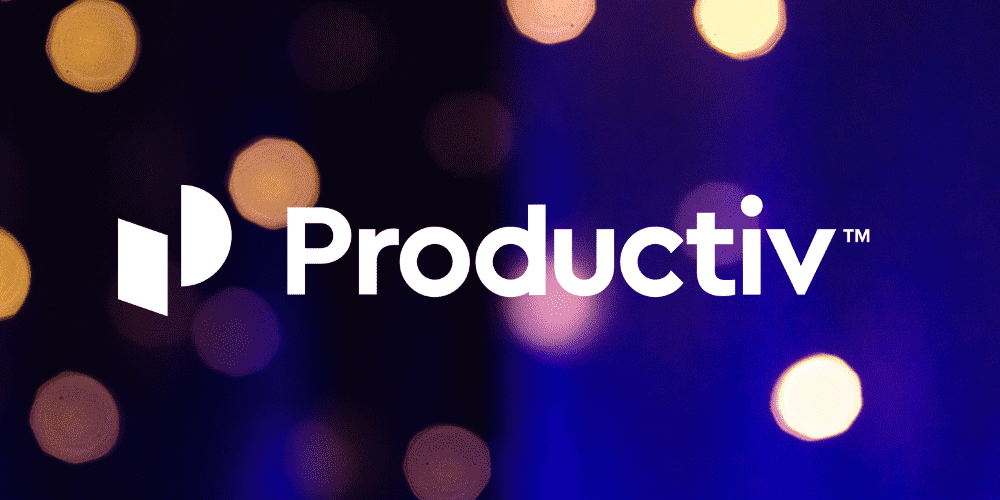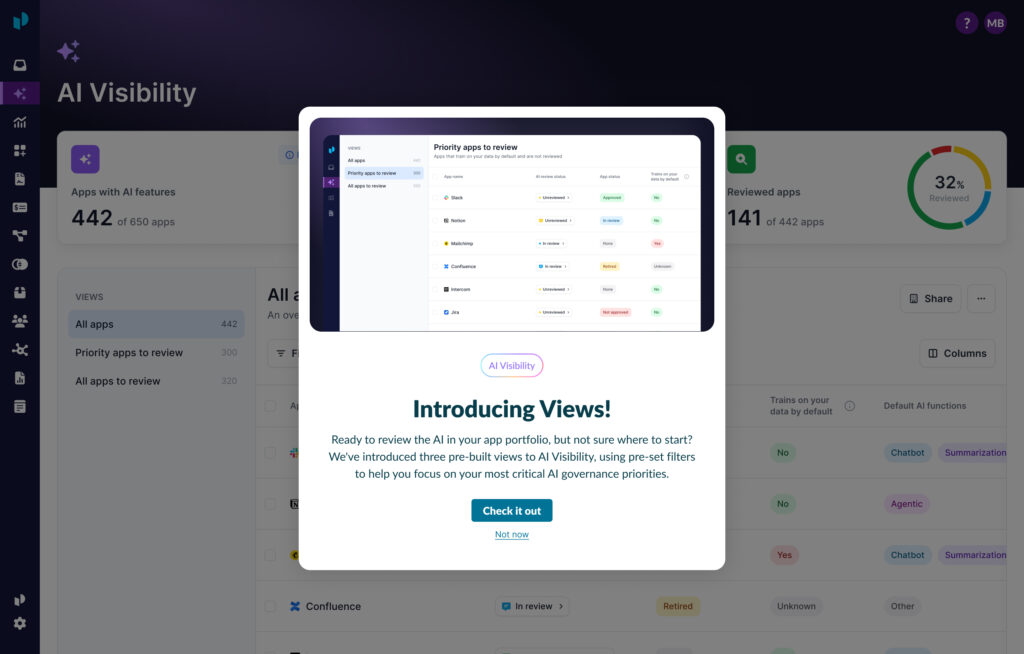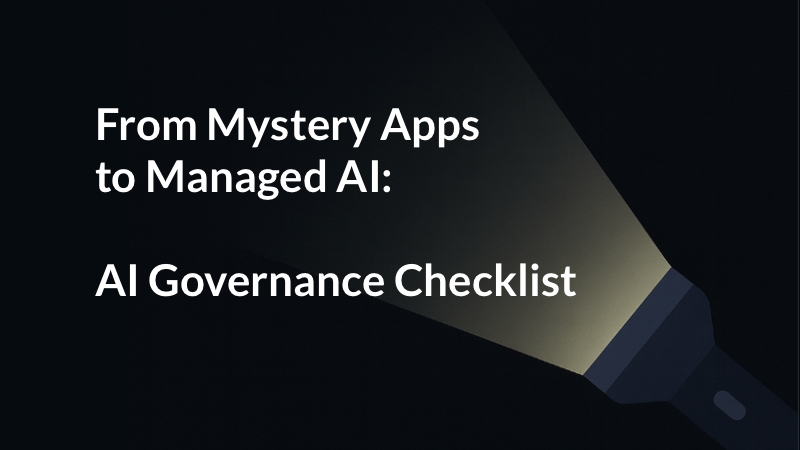
A Simple Guide to SaaS Vendor Management in 2024
If you haven’t already, 2024 should be the year you finally put a SaaS vendor management system in place. Ineffective SaaS vendor management leads to a variety of issues. You could be (and likely are) wasting budget on SaaS apps that are being underused or not used at all. And even for the ones you do use, chances are you’re overpaying. You’re likely burning resources on manual tasks that could be automated. And you could be exposing yourself to a variety of security and compliance risks.
In this guide, we’ll explain what SaaS vendor management is, why it matters, what you can do to not only optimize your SaaS costs but also ensure you make the right SaaS vendor decisions for your business this year and well into the future.
What is SaaS vendor management?
The concept of “Vendor management” has been around for a long time. With the rapidly increasing popularity of software-as-a-service (SaaS) over the last decade, a new subset of vendor management has emerged: SaaS vendor management. What does vendor management mean in the context of SaaS?
Managing vendors is about:
- Finding vendors that offer the right service or solution
- Negotiating the best contract for your company
- Ensuring you’re not dealing with too many vendors
- Mitigating vendor risk
- Establishing relationships with vendors that benefit you, not just the vendor
SaaS vendor management is about making sure that:
- You’re using SaaS apps that benefit your organization and are adopted by employees
- You’re getting the best contracts with SaaS vendors (the right price for the right length at the right number of licenses)
- You cut down on duplication, so you’re not managing multiple SaaS vendors who provide similar solutions
- You reduce SaaS vendor risk
- You create relationships with the SaaS vendor where you have greater leverage in the renewal process
Why is SaaS vendor management important?
Today, there are a record number of SaaS app in use across all industries. Our SaaS Sprawl report shows that the average company uses over 250 SaaS applications.
Employees today feel empowered to use whatever apps they like to get their jobs done, regardless of whether or not they have been approved by IT. These apps are known as shadow IT. As a result, the IT department has limited visibility into which apps employees are using, whether they’re even safe, and how much is being spent on them.
Moreover, when you renew a contract with a SaaS vendor, are you getting the best possible terms? Are you paying for licenses and features you don’t need (or that employees aren’t really using)?
SaaS vendor management ensures you use the right apps that are safe for your company without spending more money than necessary.
SaaS vendor management best practices:
With all of that in mind, let’s explore some best practices to be aware of when building a strategy to manage your SaaS vendors. Here are a few things to focus on:
- Automation is critical for SaaS vendor management
- You need visibility into SaaS apps
- It’s not just about the number of SaaS licenses
Automation is critical for SaaS vendor management
There are many moving parts to track when it comes to managing SaaS and SaaS renewals:
- The number of seats per app
- Cost per subscription
- Renewal dates
- Who the app owner is
- The app’s compliance status
- Any processes related to onboarding, security, and privacy
That’s why using manual methods such as spreadsheets doesn’t work well. They don’t automatically update when there’s a change (such as when you add a license or give one up). As a result, you don’t have an accurate way of tracking the true number of SaaS licenses you have, or any information that’s related to SaaS licenses for that matter.
Whichever system you choose to manage your SaaS vendors, it must be automated to support effective SaaS license management. Automation ensures that no one has to enter information into a document – it comes out of systems of record without human intervention. With automation, you never have to worry that your SaaS vendor management system is out of date or contains inaccurate information.
You need visibility into your SaaS apps
Having visibility into all of the SaaS apps across your organization it crucial. Gaining SaaS visibility allows you to see:
- What apps your employees are using
- Who’s using which apps
- How many people use a given app
- If there are any redundant apps (for example, you’re paying for a Webex license, yet your employees have downloaded Zoom for free)
- If there are any apps that are “orphaned” (meaning there’s no clear line-of-business owner)
Did you know that 71% of organizations have orphaned apps? Furthermore, were you aware that the cost of orphaned apps can be as high as $8,520 every year per subscription?
When you have visibility into your apps, you can avoid orphan apps, redundant apps, as well as apps that put your firm at risk for hacks.
It’s not just about the number of SaaS licenses
Don’t get us wrong – procurement‘s ability to purchase the right number of licenses is important. However, there’s another secret to SaaS vendor management: the business value of applications.
What do we mean by “business value”?
Business value looks at both the tangible and intangible benefits you gain from using an app. We’re all familiar with the tangible benefits – cost savings and revenue boosts are the first things that come to mind – but we often tend to gloss over intangible benefits, such as greater productivity, a better employee experience, and whether the apps you’re using fit into your overall business strategy.
The next question, then, is how do you determine whether an app is bringing value into your business?
You need a SaaS vendor management solution that gives you an in-depth insight into who’s using your apps and how you’re using them. Did you know that an average of 55% of a company’s SaaS app licenses go unused every year?
Many organizations rely on reports from SaaS vendors to understand how many users are logging into the app. And even that login data can be misleading. Users may be logging into an app but never use any of the features you’re paying for. Having a system that provides you with all of this SaaS data will greatly help with SaaS contract management come renewal time.
Productiv gives you insight into the business value of your SaaS apps
Productiv’s SaaS vendor management solution gives you insight into the value your SaaS apps deliver, so you can make more effective SaaS spend management decisions and more. It shows you:
- Gaps in the adoption of specific features or within specific teams
- Collaboration patterns across your organization
- Which SaaS apps drive the greatest collaboration
- Which SaaS apps are redundant
- Whether you need to upgrade to the next tier or downgrade to a lower tier
- How you’re doing relative to other companies in your industry
With Productiv, you can effectively manage your relationship with SaaS vendors and drive better SaaS procurement by making decisions based on analytics, rather than guessing how many employees are using apps, or if they’re using these apps to the fullest extent possible. Not only will you save money, but you’ll be using apps you actually need to drive your business forward.
Get a demo to see Productiv firsthand.
About Productiv:
Productiv is the IT operating system to manage your entire SaaS and AI ecosystem. It centralizes visibility into your tech stack, so CIOs and IT leaders can confidently set strategy, optimize renewals, and empower employees.





